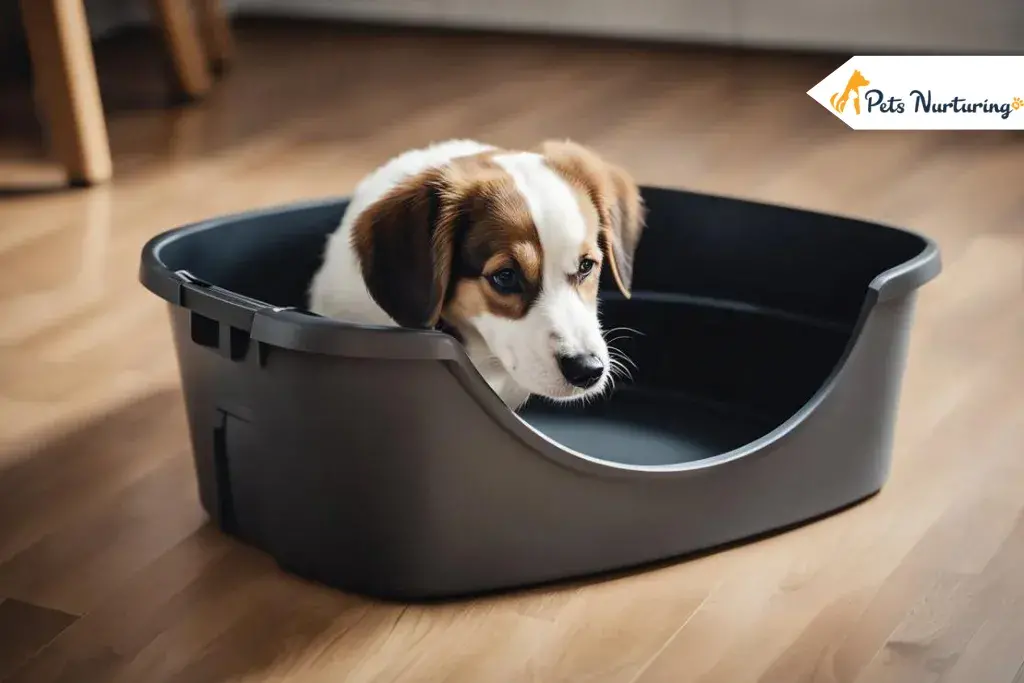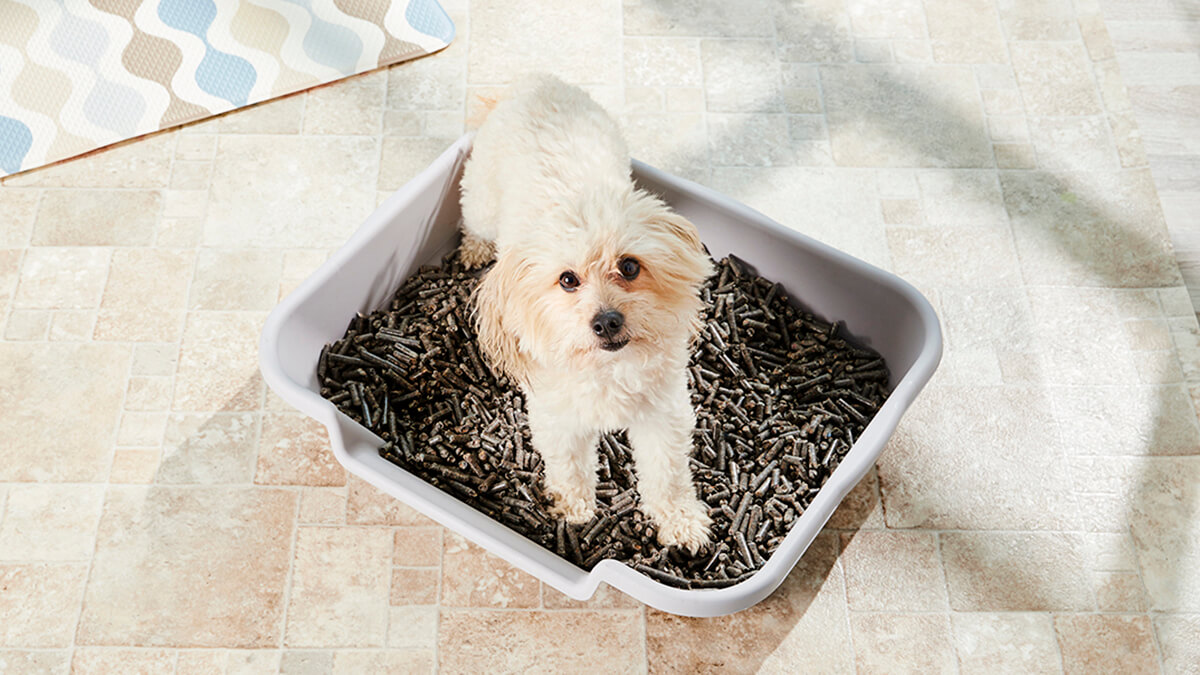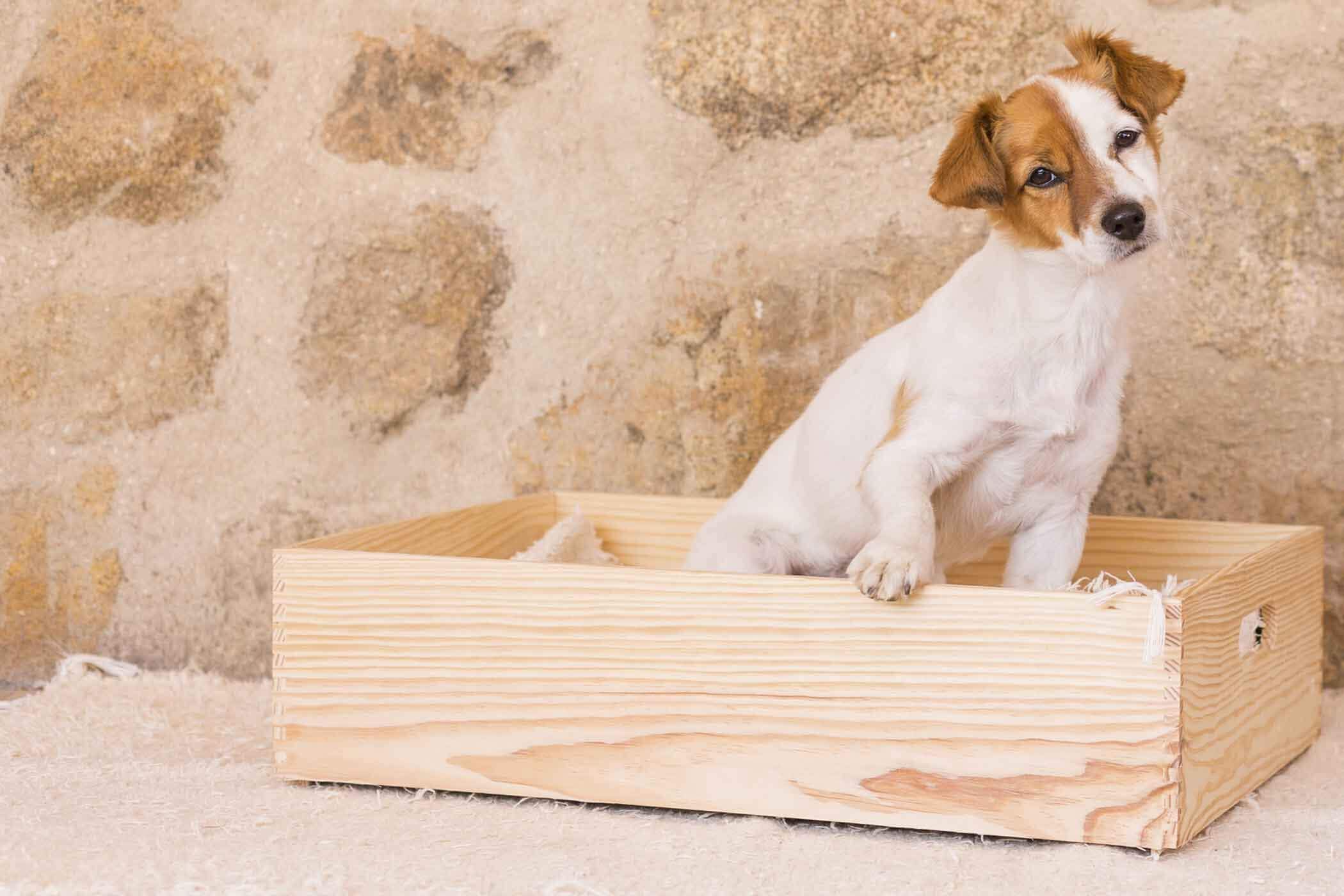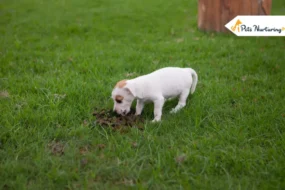
While it takes time and patience to teach your dog to use a litterbox, it can be done. And the rewards of successful training can be a real convenience. Here are some tips to help you.
Housetraining is a Pattern

- Keep the dog in his crate, only allowing him out to eat or to eliminate. Take him out when you get up in the morning, 1 hour after the dog eats, every 3-4 hours during day, 1 hour after the dog eats again and before you go to bed.
- To encourage elimination on command, repeat elimination command in a soothing voice while the dog is eliminating. This is done with your dog on a leash. Praise upon completion and allow your dog supervised “free time” in house. Many times, giving a special interactive toy for 5 minutes reinforces the command.
- Each day continues to keep the dog in his crate with the same stipulations but allow the dog out for 15 supervised minutes in your home after eliminating in his litter box. Increase time out by 15 minutes each day if no accidents occur; still supervising your dog whenever it is out and continuing the elimination on command routine.
- It usually takes from 10 – 14 days for a dog to change its pattern.
- Soak a small bit of the dog’s urine in a paper towel or newspaper and put in his bathroom area. If the dog smells his feces or urine in his bathroom area, he will be more likely to use that area.
- If you catch the dog in the act of going in the wrong place, you need to “shock” him. A loud clap of slapping your hands together and sudden movement toward the dog should cause the dog to bolt. In any event, his direct path, his destination must be his bathroom area. Use the leash to take him there. Once there, start praising the dog and use the keyword, i.e. GOOD POTTY.
- When the dog goes to the right place to use the bathroom, you need to lavish praise and pets on him, all the time repeating GOOD POTTY. Frankly, it works best if you overact when expressing your pleasure or displeasure. If by chance you see the dog in the act going on the papers (or later in the litterbox if you want), you simply must be beside yourself with joy and happiness! Believe me, the dog will catch on when you are dancing, praising, and kissing his little head when he goes in the right place!
Soiling In The Crate

- If the dog uses the bedding material as his bathroom spot, change it immediately! Replace the bedding, and sprinkle bits of food on the new bedding. If there are treats frequently found on the bedding, the dog will not use it as a bathroom area!
- If your dog has an accident, startle the dog with a clap of hand or another method. Don’t punish. When a dog looks at you, give elimination command in a pleasant voice and take him to “potty spot” on a leash. Give the elimination command and wait 10 minutes.
- If the dog does not eliminate, don’t say anything but him put back in his crate. Clean up the accident with vinegar or bleach solution and follow up with enzyme cleaner allowed to dry on own. Return to the previous amount of “free time” for one day. The dog’s problem of peeing in one spot and pooping in another is a common problem. Dogs typically don’t do all their business in one spot. Second, some dogs sometimes need to “walk it out”. You will need to provide the dog with clean potty pads after each elimination or add another area for the dog to poop at.
- Clean any “accident” areas to an extreme degree. A dog’s sense of smell is incredible. I will “over-treat” using an enzyme cleaner such as Simple Solution. After all the smells and stains are gone (to my nose and eyes), I reapply the solution.
- Accidents may be due to disease; at some point have the dog checked by a vet
Common Mistakes

These are some common mistakes to avoid:
Be consistent. Pick the dog’s area or spot and stick with it. Use the same keyword or phrase. Keep a routine as much as possible. Any change must be very gradual.
Watch the dog constantly during the first two weeks. If the dog is not beside you with you watching him, he should be in his crate. There must be a direct path between you and the dog’s bathroom area at all times. A single “uncaught” act of peeing or pooping in the wrong place will set you back nearly to the beginning.
Try not to show emotion if a dog has an accident rather have “house” give the correction.
Never hit, beat or “grind” the dog’s nose into the “accident”. It will be a mistake your dog will never forget, and you will always regret.
Keep the potty area clean. Regularly replace pads and dispose of all the waste. At least once a month, wash the area with soap and water.
Always deal with relapses or accidents. Once the dog begins to use the potty pads, you’ll provide more freedom. Then, he will have an accident — or simply decide to start using a different spot. NEVER let this go without dealing with the situation. Immediately start the routine again, including crating, if necessary. If you don’t deal with a relapse, the dog will revert to going anywhere and everywhere in the house.
Conclusion
Remember, it may take several weeks before your dog will reliably go to the litter box by himself, and several months of checking and monitoring before the dog will be fully “on his own”. With every dog, there’s frustration, then, suddenly, he’ll catch on!
About The Author

Laura Pakis is a certified dog trainer and cynologist. She is the owner and founder of the award-winning dog blog, Spike’s Dog Blog by Acme Canine. There she shares her knowledge and experience of training over 5,000 dogs and of being over 20+ years in the canine profession. During her free time she shares her life with her Bluetick Coonhound, Miss Moneypenny, and rescue, Autumn.
Explore More











